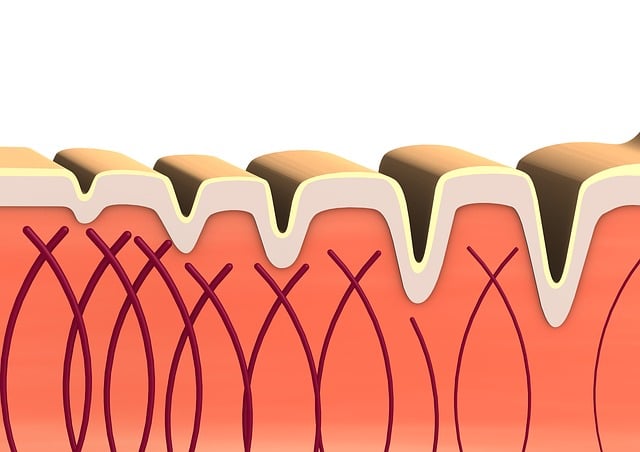Skin tags, caused by friction, genetics, and age, are common growths that can be aesthetically bothersome. Glasgow Skin Tag Removal is sought after for cosmetic reasons or discomfort. While mild cases may respond to at-home treatments, severe skin tags require professional care. Dermatologist consultations in Glasgow offer guidance on effective removal techniques like surgical excision, cryotherapy, and laser treatments, ensuring safe and personalized results.
Skin tags, those tiny, harmless growths on the skin, are more common than you think. In this comprehensive overview, we’ll unravel the mysteries of skin tags, exploring their causes and risk factors in detail. From understanding their development to learning effective prevention and self-care strategies, this guide offers valuable insights. Additionally, discover proven removal methods, including a special focus on the Glasgow Skin Tag Removal techniques, ensuring you’re equipped with all the knowledge needed to address these benign yet often bothersome skin concerns.
- Understanding Skin Tags: A Comprehensive Overview
- Common Causes and Risk Factors
- Prevention and Self-Care Strategies
- Effective Removal Methods: Glasgow Skin Tag Removal Guide
Understanding Skin Tags: A Comprehensive Overview
Skin tags, also known as acrochordons, are small, soft skin growths that typically appear in areas where skin rubs against itself. They are harmless and often painless, but many people opt for removal due to aesthetic concerns or discomfort. Understanding what causes these tags is essential when considering Glasgow Skin Tag Removal options.
Various factors contribute to the development of skin tags, including genetics, weight gain, and friction. They are more common in certain areas like the neck, armpits, and groin because these regions experience frequent rubbing. Hormonal changes, pregnancy, or conditions like diabetes can also increase the likelihood of developing skin tags. Age is another factor; as people get older, their skin becomes thinner, making them more susceptible to these growths.
Common Causes and Risk Factors
Skin tags, small skin growths that hang off the neck, armpits, or other parts of the body, are a common concern for many people. While they are typically harmless, some individuals seek Glasgow Skin Tag Removal due to cosmetic reasons or discomfort. The development of these tags is often linked to several factors. One primary cause is friction, especially in areas where skin rubs against itself frequently. This constant irritation can lead to the growth of skin tags over time. Obesity is another significant risk factor, as excess weight can create additional friction points and promote skin tag formation.
Genetics also play a role in skin tag development, making some individuals more predisposed to them than others. Additionally, certain medical conditions like diabetes or hormonal imbalances have been associated with an increased likelihood of skin tags. Age is another factor; as people get older, their skin becomes less elastic, and areas of friction are more likely to develop tags. Understanding these causes and risk factors can help individuals take proactive measures to prevent or manage skin tags effectively, potentially reducing the need for Glasgow Skin Tag Removal procedures.
Prevention and Self-Care Strategies
Skin tags, while usually harmless, can be unsightly and uncomfortable. Fortunately, there are several prevention and self-care strategies that can help manage or even avoid them altogether. Regular hygiene practices play a significant role in maintaining skin health. Keeping the affected areas clean prevents irritations and infections, which could potentially lead to the growth or proliferation of tags.
For those considering Glasgow Skin Tag Removal, it’s essential to consult a professional who can offer safe and effective solutions. Simple at-home remedies like over-the-counter creams or freezing treatments (cryotherapy) may provide relief for minor cases. However, for more persistent or widespread skin tags, medical expertise is recommended to prevent scarring or other complications. Regular check-ups with a dermatologist can also help in early detection and management of skin changes, including potential cancer signs.
Effective Removal Methods: Glasgow Skin Tag Removal Guide
Skin tags, those small, soft bumps that can appear anywhere on your body, are a common concern. While they are usually harmless, many people seek effective removal methods for aesthetic reasons or to alleviate irritation. In Glasgow, skin tag removal is a growing trend, driven by both medical necessity and personal preference.
There are several techniques available for Glasgow skin tag removal, each with its own advantages. Among the most popular are surgical excision, cryotherapy (freezing), and laser treatments. Surgical excision involves cutting off the tag with a scalpel, often under local anaesthesia. Cryotherapy uses liquid nitrogen to freeze and destroy the tag. Laser treatments target the blood vessels that feed the skin tag, causing it to fall off. Each method has its own recovery time and cost considerations, so consulting with a dermatologist is crucial to choosing the best approach for individual needs.
Skin tags, while often harmless, can be a nuisance. Understanding their common causes, such as friction, hormonal changes, and genetics, is the first step towards effective prevention and management. The Glasgow Skin Tag Removal Guide offers a range of safe and proven methods to remove these tags, ensuring a smoother, more comfortable skin experience. By adopting simple self-care strategies and knowing when to seek professional assistance, you can effectively navigate the journey towards clear, healthy skin.
